Related Research Articles
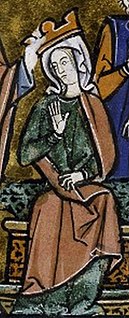
Melisende was Queen of Jerusalem from 1131 to 1153, and regent for her son between 1153 and 1161, while he was on campaign. She was the eldest daughter of King Baldwin II of Jerusalem, and the Armenian princess Morphia of Melitene.
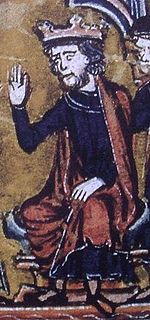
Baldwin II, also known as Baldwin of Bourcq or Bourg, was Count of Edessa from 1100 to 1118, and King of Jerusalem from 1118 until his death. He accompanied his cousins Godfrey of Bouillon and Baldwin of Boulogne to the Holy Land during the First Crusade. He succeeded Baldwin of Boulogne as the second count of Edessa when he left the county for Jerusalem following his brother's death. He was captured at the Battle of Harran in 1104. He was held first by Sökmen of Mardin, then by Jikirmish of Mosul, and finally by Jawali Saqawa. During his captivity, Tancred, the Crusader ruler of the Principality of Antioch, and Tancred's cousin, Richard of Salerno, governed Edessa as Baldwin's regents.
Raymond III was count of Tripoli from 1152 to 1187. He was a minor when Assassins murdered his father, Raymond II of Tripoli. Baldwin III of Jerusalem, who was staying in Tripoli, made Raymond's mother, Hodierna of Jerusalem, regent. Raymond spent the following years at the royal court in Jerusalem. He participated in a series of military campaigns against Nur ad-Din, the Zengid ruler of Damascus, after he reached the age of majority in 1155. Raymond hired pirates in 1161 to pillage the Byzantine coastline and islands to take vengeance on Byzantine Emperor Manuel I Komnenos, who had refused to marry his sister Melisende. Captured in the Battle of Harim by Nur ad-Din's troops on 10 August 1164, he was imprisoned in Aleppo for almost ten years. During his captivity, Amalric I of Jerusalem administered the county of Tripoli on his behalf.

Sibylla was Queen of Jerusalem from 1186 to 1190. She reigned alongside her husband Guy of Lusignan, to whom she was unwaveringly attached despite his unpopularity among the barons of the Kingdom of Jerusalem.

The Crusader state of the Kingdom of Jerusalem, created in 1099, was divided into a number of smaller seigneuries. According to the 13th-century jurist John of Ibelin, the four highest crown vassals in the kingdom proper were the count of Jaffa and Ascalon, the prince of Galilee, the lord of Sidon, and the lord of Oultrejordain.

The count of Tripoli was the ruler of the County of Tripoli, a crusader state from 1102 through 1289. Of the four major crusader states in the Levant, Tripoli was created last.
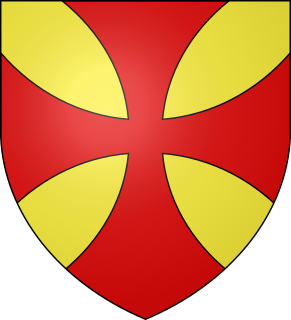
Barisan of Ibelin was an important figure in the crusader Kingdom of Jerusalem, and was the founder of the Ibelin family. His name was later written as "Balian" and he is sometimes known as Balian the Elder, Barisan the Old or Balian I. Barisan was lord of Ramla from 1138 to 1150.
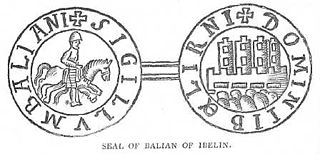
Balian of Ibelin, also known as Barisan the Younger, was a crusader noble of the Kingdom of Jerusalem in the 12th century. He was lord of Ibelin from 1170 to 1193. As the leader of the defense of the city during the siege of Jerusalem in 1187, he surrendered Jerusalem to Saladin on 2 October 1187.

The Principality of Galilee was one of the four major seigneuries of the crusader Kingdom of Jerusalem, according to 13th-century commentator John of Ibelin. The direct holdings of the principality centred around Tiberias, in Galilee proper, but with all its vassals, the lordship covered all Galilee and southern Phoenicia. The independent Lordship of Sidon was located between Galilee's holdings. The principality also had its own vassals: the Lordships of Beirut, Nazareth, and Haifa.

Reginald Grenier was Count of Sidon and an important noble in the late-12th century Kingdom of Jerusalem.
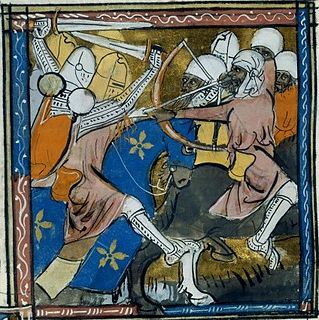
Hugh of Fauquembergues, also known as Hugh of St Omer, Hugh of Falkenberg, or Hugh of Falchenberg was Prince of Galilee from 1101 to his death. He was Lord of Fauquembergues before joining the First Crusade. Baldwin I of Jerusalem granted him Galilee after its first prince, Tancred, who was Baldwin's opponent, had voluntarily renounced it. Hugh assisted Baldwin against the Fatimids and made raids into Seljuk territories. He established the castles of Toron and Chastel Neuf. He died fighting against Toghtekin, Atabeg of Damascus.
Gervase of Bazoches, who is also known as Gervaise, was Prince of Galilee from 1105/1106 until his death. He was born into a French noble family but migrated to the Holy Land, where King Baldwin I of Jerusalem made him senechal in the early 1100s and appointem him prince of Galilee in 1105/1106. Gervase was captured during a raid by Toghtekin, atabeg of Damascus, who had Gervase executed after Baldwin I refused to surrender three important towns in exchange for Gervase's release.
William of Bures was Prince of Galilee from 1119 or 1120 to his death. He was descended from a French noble family which held estates near Paris. William and his brother, Godfrey, were listed among the chief vassals of Joscelin of Courtenay, Prince of Galilee, when their presence in the Holy Land was first recorded in 1115. After Joscelin received the County of Edessa from Baldwin II of Jerusalem in 1119, the king granted the Principality of Galilee to William. He succeeded Eustace Grenier as constable and bailiff in 1123. In his latter capacity, he administered the kingdom during the Baldwin II's captivity for more than a year, but his authority was limited.
William of Saint Omer was a Crusader noble.
Elinand, also known as Elinard, was Prince of Galilee from 1143 or 1144 to around 1149. His parentage is unknown. He succeeded William I of Bures who either had died, or been forced into exile. Elinand was one of the main supporters of Melisende of Jerusalem. Mu'in ad-Din Unur, the ruler of Damascus, bribed him during the siege of Damascus in 1148, according to gossips spreading in the crusaders' camp.
Hugh II of Saint Omer was a Crusader knight and titular Prince of Galilee and Tiberias.
The army of Godfrey of Bouillon, the duke of Lower Lorraine, in response to the call by Pope Urban II to both liberate Jerusalem from Muslim forces and protect the Byzantine Empire from similar attacks. Godfrey and his army, one of several Frankish forces deployed during the First Crusade, was among the first to arrive in Constantinople. The army was unique in that it included among its warriors the first three kings of Jerusalem, although Godfrey preferred the title Defender of the Holy Sepulchre, Advocatus Sancti Sepulchri, as he believed that the true King of Jerusalem was Christ. This article focuses on the members of the army rather that its exploits which are described in detail in Godfrey’s biography as well as numerous sources listed below.
Eschiva of Bures, also known as Eschiva II, was Princess of Galilee in the Kingdom of Jerusalem from 1158 to 1187.
The Crusade of 1129 or the Damascus Crusade was a military campaign of the Kingdom of Jerusalem with forces from the other crusader states and from western Europe against the Emirate of Damascus. The brainchild of King Baldwin II of Jerusalem, the crusade failed to meet its military objectives. Its diplomatic preliminaries, however, secured the succession to the throne of Jerusalem and papal backing for the Knights Templar.
References
- ↑ Fulton, Michael S. (2022-06-08). Contest for Egypt: The Collapse of the Fatimid Caliphate, the Ebb of Crusader Influence, and the Rise of Saladin. BRILL. p. 27. ISBN 978-90-04-51625-0.